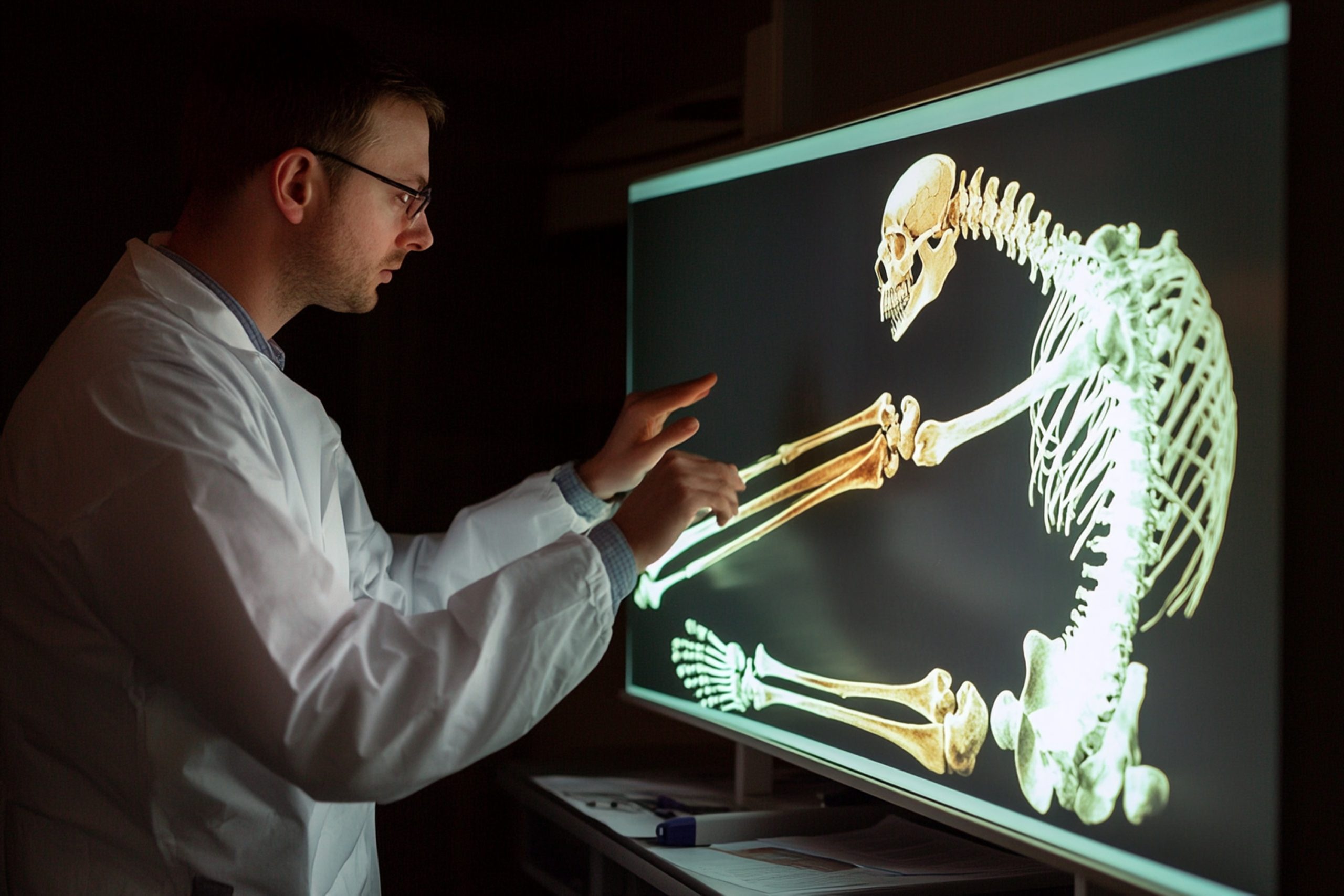
How Much Is IV Hydration Therapy
April 21, 2025
What is Fibromyalgia?
April 23, 2025What is Osteomyelitis?

What Causes Osteomyelitis?

The main cause of osteomyelitis is bacterial infections, and Staphylococcus aureus is the most common pathogen. Other bacteria and fungi may also be the cause. Infection can spread to the bone through:
- Hematogenous Spread: Bacteria from an existing infection elsewhere in the body may travel through the blood and infect a bone.
- Direct Contamination: Open fractures, surgery, or deep wounds can introduce bacteria directly into the bone.
Local Infections: The infection caused by an adjacent abscess or infected joint extends to the adjoining bones.
Common Symptoms of Osteomyelitis
The features of osteomyelitis change according to the intensity and severity of the condition. Common clinical features are:
- Severe Pain in the Bone: Severe and throbbing pain in the involved area
- Swelling and Redness: Redness and inflammation, as well as a feeling of heat, over the affected area.
- Fever with Chills: Systemic symptom of infection- fever, cold chills and sweating.
- Fatigue and Weakness: General malaise and loss of energy.
- Limited Mobility: The affected limb or joint cannot be moved .
Drainage of Pus: In some cases, an open wound with pus may form over the infected bone.

Who is at Risk for Osteomyelitis?
Some individuals have a higher chance of acquiring osteomyelitis due to;
- Diabetic Patients: Lack of proper blood circulation and hyperglycemia make diabetic patients prone to infections, especially in the feet.
- Those patients with weakened immune systems: who are undergoing chemotherapy, taking immunosuppressants, or have HIV/AIDS, are at higher risk.
- Patients who have recently undergone surgery or trauma: bone fractures, joint replacements, or orthopedic surgeries place a patient at risk of infections.
- Intravenous drug users: are at increased risk because the repeated injections of unsterile needles introduce bacteria into the blood.
Types of Osteomyelitis
Osteomyelitis can be classified depending on its duration and mode of infection:
Acute Osteomyelitis
This develops suddenly, often within two weeks of infection, and is characterized by intense pain, fever, and swelling. Early treatment usually prevents permanent damage.
Chronic Osteomyelitis
If the infection persists for months or years, it becomes chronic. This form is harder to treat and may require several interventions due to recurrent abscesses and bone destruction.
Vertebral Osteomyelitis
This type affects the spine, causing severe back pain, fever, and neurological issues in severe cases. It is common in older adults and individuals with compromised immunity.
A thorough medical evaluation is required to confirm osteomyelitis. Diagnostic methods include:
- Blood Tests: Elevated white blood cell count and inflammatory markers like C-reactive protein (CRP) and erythrocyte sedimentation rate (ESR) indicate infection.
- Imaging studies: X-ray, MRI and CT scans- help to show the damage that has occurred within the bone with the formation of an abscess.
Bone Biopsy: To identify the infecting organism sample of infected bone tissue is collected and used for guiding antibiotic treatment.
Treatment options for Osteomyelitis

-
Most infections of bacterial osteomyelitis are treated through intravenous antibiotics for several weeks. Common drugs used include
- Vancomycin (for infections caused by MRSA)
- Ceftriaxone or Nafcillin (for infection caused by Staphylococcus)
- Fluoroquinolones for Gram-negative bacteria
Surgical intervention
In severe cases, surgery may be necessary to:
- Debride dead or infected bone tissue
- Drain pus-filled abscesses
- Restore blood flow to the affected area
- In extreme cases, amputation may be necessary to prevent systemic infection
Hyperbaric Oxygen Therapy (HBOT)
For chronic osteomyelitis, HBOT can enhance oxygen delivery to infected tissues, aiding in bacterial eradication and bone healing.
Pain Management and Rehabilitation
Pain medications, physical therapy, and lifestyle changes help patients regain mobility and quality of life after osteomyelitis treatment.
Prevention Strategies
Reducing the risk of osteomyelitis involves practicing good hygiene and maintaining overall health. Some preventive measures include:
- Proper Wound Care: Cleaning and dressing wounds to prevent bacterial entry.
- Diabetes Management: Keeping blood sugar levels under control to reduce infection risk.
- Avoiding Intravenous Drug Use: Using clean needles and accessing healthcare for drug dependence.
- Regular Follow-Up Care: Patients with prosthetic implants or a history of infection require scheduled follow-up evaluation.
Complications of Untreated Osteomyelitis
Untreated osteomyelitis will result in the following conditions.
- Osteonecrosis: Inability of bones to get oxygen and blood which leads to its death
- Septic Arthritis: Bacteria spread to joints, and eventually, damage all the joint components
- Pathological Fracture: Fragility of the weakened bones leading to fractures.
- Sepsis: This is a dangerous infection of the blood that causes failure of different organs.
Conclusion
Osteomyelitis is a medical condition that calls for prompt action. Early detection, intensive antibiotic treatment, and, in some cases, surgery can prevent serious complications. At-risk patients must take preventive measures to avoid infection and seek urgent medical attention once symptoms appear.
For more details on osteomyelitis and professional medical services, visit Smart Choice Clinic.



